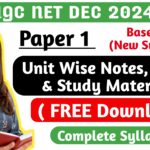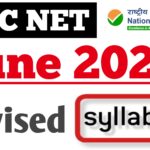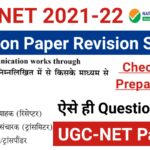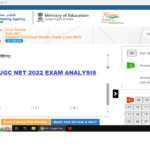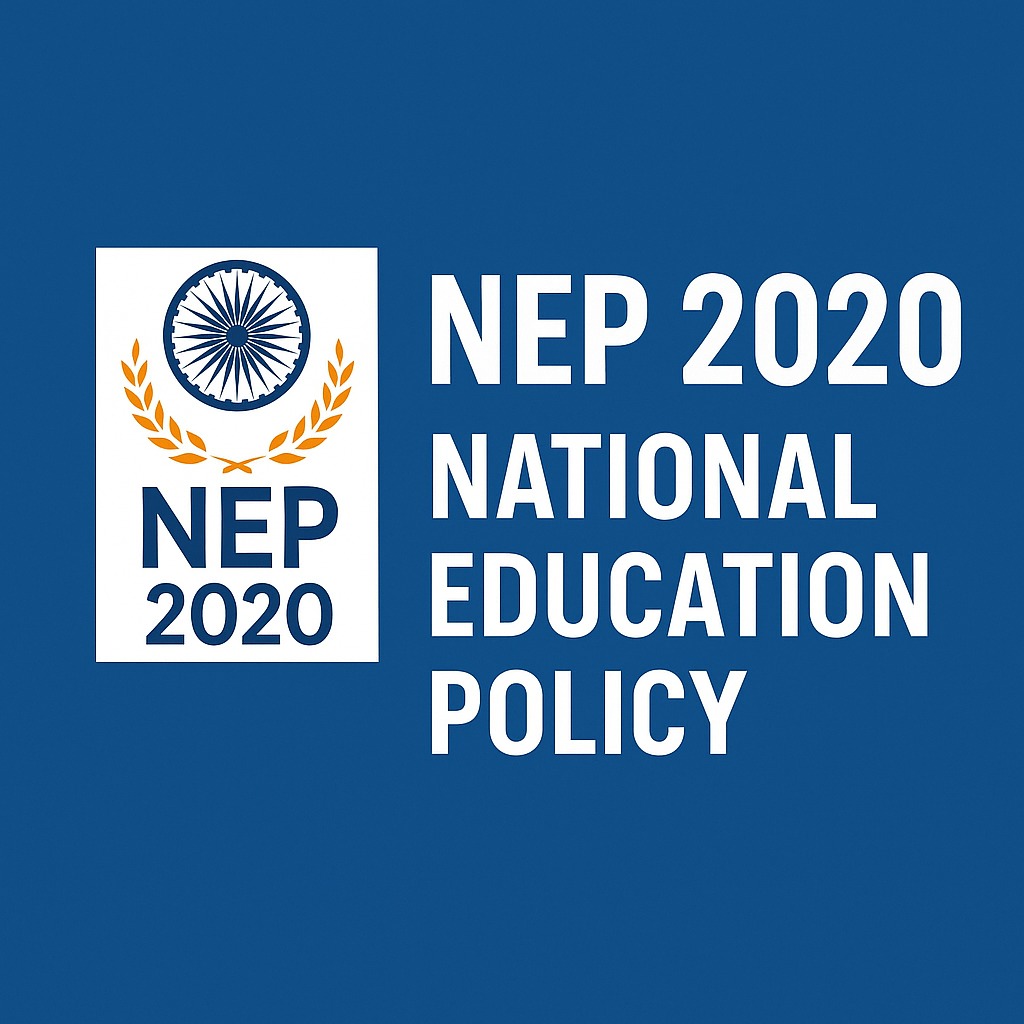
UGC NET 11th July 2022 Paper 1 Question Paper Analysis for both Shift 1 and Shift 2 will be provided below. UGC NET 11th July 2022 Paper 1 Memory-Based Question Paper will also be provided here.
UGC NET 9th July 2022 Paper 1 Analysis: Day 2 of UGC NET 2022 examination is being conducted on Saturday, July 11, 2022 while the other days are scheduled for July 12 .Each day is held in two shifts from 9 AM to 12 PM and 3 PM to 6 PM. Phase 2 of UGC NET examination will be carried out later on August 12, 13, and 14. UGC NET Phase 1 consists of 2 papers, Paper 1 and Paper 2. Out of these two, Paper 1 is the same for all while Paper 2 is subject-specific, carried out for a total of 82 subjects.
UGC NET 2022 Paper 1 and Paper 2 are conducted together for a duration of 180 minutes and it has a total of 50 questions which are unequally divided into 10 sections, the details of which are provided below along with the analysis. The weightage distribution of these sections is not pre-defined but rather changes from paper to paper. So, we have also included the section-wise number of questions asked in the exam while analyzing the paper.
UGC NET Exam Highlights 2022 (UGC NET 11th July 2022 Paper 1 Question Paper Analysis)
Candidates can check the UGC NET exam highlights for the exam. It is important to know the details that are related to the exam.
- The NTA will administer the UGC NET Exam in online mode.
- The exam will be a computer-based test and the exam shall be conducted in two shifts.
- The UGC NET exam timings 2022 for both the shifts are
- UGC NET exam 2022 – Shift 1: 09:00 AM to 12:00 PM
- UGC NET exam 2022 – Shift 2: 03:00 PM to 06:00 PM
UGC NET 11th July 2022 Paper 1 Question Paper Analysis; Major Highlights
Major highlights of the 11th July examination has been updated here in due time after the conclusion of the exam.
Overall Difficulty Level of Shift 1: Moderate
Overall Difficulty Level of Shift 2: To be Updated
Expected Good Score of Shift 1: 33-35
Expected Good Score of Shift 2: To be Updated Was Shift 1 Paper Time-Consuming? No
Was Shift 2 Paper Time-Consuming? To be Updated
Shift 1 vs Shift 2 Analysis Comparison: To be Updated
UGC NET Exam Analysis Difficulty Level [July 11, 2022]
Check the section-wise difficulty level of UGC NET Paper 1 hereafter the exam. Candidates who have exams in upcoming shifts must check the difficulty level of the exam.
UGC NET 11TH JULY 2022 PAPER 1 QUESTION PAPER ANALYSIS: SHIFT 1 AND 2:
UGC NET 11th July 2022 Paper 1 Shift 2 Question Paper Analysis; Major Highlights
Major highlights of the 9th July examination has been updated here in due time after the conclusion of the exam.
Overall Difficulty Level of Shift 1: Moderate
Overall Difficulty Level of Shift 2: To be Updated
Expected Good Score of Shift 1: 30-35
Expected Good Score of Shift 2: To be Updated
Was Shift 1 Paper Time-Consuming? No
Was Shift 2 Paper Time-Consuming? To be Updated
Shift 1 vs Shift 2 Analysis Comparison:
UGC NET 11th July 2022 Paper 1 Question Paper Analysis: Shift 1 & 2
The combined analysis of both shifts has been detailed in the table below:
| Section | Difficulty Level | Number of Questions Asked in the Exam | Topics with Highest Weightage |
| Communication | Moderate | 5-6 | Communication Barrier /Mode ,Effective Communication ,Formal ,linear Communication ,Non linear & Interaction Matching ,Oral Communication & Step of Communication |
| Data Interpretation | Easy to Moderate | 10 | Covid Same PYQ |
| Information and Communication Technology (ICT) | Moderate | 5-6 | Computer Generation ,Circuit Related Question , 16 GB Conversion ,ASCII ,Number system RAM ,JPG Format ,Full form of MOODLE ,Optic Fibre & DVD R & DVD Raw ,Malware Virus |
| Logical Reasoning | Easy | 5-6 | Syllogism, Moods, Figuers, Square of Opposition ,Indian logic assertion Reason, Hetu Related Question ,Arthapatti |
| Mathematics | Easy | 4-5 | Ratio, Average, Percentage ,Number System,Simple Interest |
| People and Environment | Easy | 4-5 | Water Pollution & Treatment (Sludge Treatment ) ,Biomass, Eco-system, Source of Energy & SDG/MDG Goal ,(Govardhan ,Jal Jeevan )Govt Scheme ,Photochemical Smog ,Hurricane Speed ,COVID Virus Name -SARS COV -2 |
| Reading Comprehension | Easy | 5 | |
| Research Aptitude | Easy | 5 | Types of Research , Quantitative & Qualitative Research |
| Teaching Aptitude | Moderate | 7 | Value Education Assertion Reason ,Effective Teaching ,Classroom Teaching & Idealism |
| Higher Education System: Governance, Polity, Administration, and Current Affairs | Easy | 4-5 | New Education Policy, Govt Schemes,Swayam Prabha ,CARE related Question,Copyright Related question,British Education Related ,Pre/Post Independence ,SPSS Full form ,NCVET Full form ,Coordinator of Vocational Education ,SWAYAM Quadrants & Coordinator , Lord Curzen commision Related |
Question Asked In Today Session –
Q -The missing term in the series 1, 4, 27, 16, ?, 36, 343, … is

Logic: Cube of odd number and square of even number
Q 16 GB =2^ =
1 GB = 1024 MB= 2^10 MB
1MB = 1024 KB =2^10 KB
1KB = 1024 bytes= 2^10 bytes
1byte = 8 bits= 2^3bits
therefore
16GB= 16 * 2^10 * 2^10 * 2^10 * 2^3
= 2^4 * 2^10 * 2^10 * 2^10 * 2^3
= 2^(4+10+10+10+3)
Ans = 2^37 bits
Q SCOPUS =Elsevier-Scopus is Elsevier’s abstract and citation database launched in 2004. Scopus covers nearly 36,377 titles from approximately 11,678 publishers, of which 34,346 are peer-reviewed journals in top-level subject fields: life sciences, social sciences, physical sciences and health sciences.
स्कोपस एल्सेवियर का सार और उद्धरण डेटाबेस है जिसे 2004 में लॉन्च किया गया था। स्कोपस में लगभग 11,678 प्रकाशकों के लगभग 36,377 शीर्षक शामिल हैं, जिनमें से 34,346 शीर्ष-स्तरीय विषय क्षेत्रों में सहकर्मी-समीक्षित पत्रिकाएं हैं: जीवन विज्ञान, सामाजिक विज्ञान, भौतिक विज्ञान और स्वास्थ्य विज्ञान
Q Speed Scooter wala
Q AICTE /NPTEL Matching
Q Biomass
Q Psychology ,Cognitive Domain -Piaget
Q Fundamental Research
Q 2nd Shift Boy Girl % DI Question
Q Indian Logic 3 Question 2 Square of Opposition Mood & Figure
Q ICT Input Output Device Matching
Q Swayam MOOC Statement Question
Q Swayam Prabha DTH Channel
Q % Profit
Q Ancient Education
Q Green house Gas
Q Facebook Skype
Q MOOC Full form
Q NEP –The new policy aims in the higher education to improve the Gross Enrollment Ratio from 26.3% to 50% by
2030
2035
2025
2040
Q Which satellite system is used in swayan prabha?
- QUICKBird
- GSAT-15
- LANDSAT-TM
- CARTOSAT
Q Teaching Behaviour ,Evaluation
Q Hurricane Speed

SPSS
Software

Description
SPSS Statistics is a statistical software suite developed by IBM for data management, advanced analytics, multivariate analysis, business intelligence, and criminal investigation. Long produced by SPSS Inc., it was acquired by IBM in 2009. Current versions have the brand name: IBM SPSS Statistics
एसपीएसएस
सॉफ़्टवेयर
विवरण
SPSS सांख्यिकी आईबीएम द्वारा डेटा प्रबंधन, उन्नत विश्लेषिकी, बहुभिन्नरूपी विश्लेषण, व्यापार खुफिया और आपराधिक जांच के लिए विकसित एक सांख्यिकीय सॉफ्टवेयर सूट है। एसपीएसएस इंक द्वारा लंबे समय से उत्पादित, इसे 2009 में आईबीएम द्वारा अधिग्रहित किया गया था। वर्तमान संस्करणों का ब्रांड नाम है: आईबीएम एसपीएसएस सांख्यिकी।
Q National Council for Vocational Education and Training (NCVET) | Ministry of Skill Development and Entrepreneurship |
SWAYAM (Study Webs of Active-Learning for Young Aspiring Minds) is a MOOC (Massive open online courses ) that offers courses in various fields like engineering, humanities, social sciences, etc.

SWAYAM:
- This program is initiated by the Government of India (i.e it is not a Non-Governmental Organization) and designed to achieve the three cardinal principles of Education Policy viz., access, equity, and quality.
- The objective is to take the best teaching-learning resources to all, including the most disadvantaged.
- It is an open online course (i.e. it is not an online platform)
- All the courses are interactive, prepared by the best teachers in the country, and are available, free of cost to any learner.
- The courses hosted on SWAYAM are in 4 quadrants –
- Video lecture,
- Specially prepared reading material that can be downloaded/printed
- Self-assessment tests through tests and quizzes, and
- An online discussion forum for clearing the doubts.
- Various steps have been taken to enrich the learning experience by using audio-video and multimedia and state of the art pedagogy/technology.

Nine National Coordinators are appointed to ensure that the best quality content is produced and delivered. They are:
- AICTE (All India Council for Technical Education) for self-paced and international courses.
- NPTEL (National Programme on Technology Enhanced Learning) for Engineering.
- UGC (University Grants Commission) for nontechnical post-graduation education.
- CEC (Consortium for Educational Communication) for undergraduate education.
- NCERT (National Council of Educational Research and Training) for school education.
- NIOS (National Institute of Open Schooling) for school education.
- IGNOU (Indira Gandhi National Open University) for out-of-school students.
- IIMB (Indian Institute of Management, Bangalore) for management studies.
- NITTTR (National Institute of Technical Teachers Training and Research) for Teacher Training program.
स्वयं:
- यह कार्यक्रम भारत सरकार द्वारा शुरू किया गया है (अर्थात यह एक गैर-सरकारी संगठन नहीं है) और शिक्षा नीति के तीन प्रमुख सिद्धांतों जैसे पहुंच, समानता और गुणवत्ता को प्राप्त करने के लिए डिज़ाइन किया गया है।
- इसका उद्देश्य सबसे अधिक वंचितों सहित सभी के लिए सर्वोत्तम शिक्षण-अधिगम संसाधन उपलब्ध कराना है।
- यह एक खुला ऑनलाइन पाठ्यक्रम है (अर्थात यह ऑनलाइन प्लेटफॉर्म नहीं है)
- सभी पाठ्यक्रम इंटरैक्टिव हैं, देश के सर्वश्रेष्ठ शिक्षकों द्वारा तैयार किए गए हैं, और किसी भी शिक्षार्थी के लिए निःशुल्क उपलब्ध हैं।
- SWAYAM पर होस्ट किए गए कोर्स 4 क्वाड्रंट में हैं –
- वीडियो व्याख्यान,
- विशेष रूप से तैयार की गई पठन सामग्री जिसे डाउनलोड/मुद्रित किया जा सकता है
- परीक्षण और प्रश्नोत्तरी के माध्यम से स्व-मूल्यांकन परीक्षण, और
- शंकाओं को दूर करने के लिए एक ऑनलाइन चर्चा मंच।
- ऑडियो-वीडियो और मल्टीमीडिया और अत्याधुनिक शिक्षाशास्त्र/प्रौद्योगिकी का उपयोग करके सीखने के अनुभव को समृद्ध करने के लिए विभिन्न कदम उठाए गए हैं।

सर्वोत्तम गुणवत्ता वाली सामग्री का उत्पादन और वितरण सुनिश्चित करने के लिए नौ राष्ट्रीय समन्वयक नियुक्त किए गए हैं । वे हैं:
- स्व–पुस्तक और अंतर्राष्ट्रीय पाठ्यक्रमों के लिए एआईसीटीई (अखिल भारतीय तकनीकी शिक्षा परिषद)।
- इंजीनियरिंग के लिए एनपीटीईएल (नेशनल प्रोग्राम ऑन टेक्नोलॉजी एनहांस्ड लर्निंग)।
- गैर-तकनीकी स्नातकोत्तर शिक्षा के लिए यूजीसी (विश्वविद्यालय अनुदान आयोग)।
- स्नातक शिक्षा के लिए सीईसी (शैक्षणिक संचार के लिए संघ)।
- स्कूली शिक्षा के लिए NCERT (राष्ट्रीय शैक्षिक अनुसंधान और प्रशिक्षण परिषद)।
- स्कूली शिक्षा के लिए एनआईओएस (राष्ट्रीय मुक्त विद्यालयी शिक्षा संस्थान)।
- स्कूल से बाहर के छात्रों के लिए इग्नू (इंदिरा गांधी राष्ट्रीय मुक्त विश्वविद्यालय)।
- प्रबंधन अध्ययन के लिए IIMB (भारतीय प्रबंधन संस्थान, बैंगलोर)।
- शिक्षक प्रशिक्षण कार्यक्रम के लिए NITTTR (राष्ट्रीय तकनीकी शिक्षक प्रशिक्षण और अनुसंधान संस्थान)।
Ministry of Education, Government of India’s, SWAYAM platform for offering MOOCs has how many quadrants for designing courses?
- 2 Quadrants
- 4 Quadrants
- 6 Quadrants
- 8 Quadrants
The Ministry of Education has launched many schemes for promoting e-learning across students in schools and universities.
Key Points
SWAYAM:
- Its full form is ‘Study Web of Active Learning For Young Aspiring Minds’.
- It is an integrated online learning platform for online courses.
- It is an Indian massive open online course platform.
- It was launched on July 9, 2017.
- It was designed to achieve the three-cardinal principle of Education policy, i.e., access, equity, and equality.
- The courses hosted on Swayam are on 4 quadrants as follows:
- Video lecture
- E-Content
- Test and assignments
- Online Discussion forum
Additional Information
| National Coordinators | Course provided by them |
| AICTE (All India Council for Technical Education) | For self-paced and international courses |
| NITTTR (National Institute of Technical Teachers Training & Research) | Teacher Training Program |
| IGNOU (Indira Gandhi National Open University) | Out of school students |
| NIOS (National Institute of Open Schooling) | For school education |
| IIM B(Indian Institute of Management, Bangalore) | Management studies |
| NCERT (National Council for Educational Research Training) | For school education |
| UGC (University Grants Commission) | Non-technical post-graduation education |
| NPTEL (National Program on Technology Enhanced Learning) | Engineering |
| CEC (Consortium for Educational Communication) | For undergraduate education |
स्वयं:
- इसका फुल फॉर्म ‘ स्टडी वेब ऑफ एक्टिव लर्निंग फॉर यंग एस्पायरिंग माइंड्स ‘ है।
- यह ऑनलाइन पाठ्यक्रमों के लिए एक एकीकृत ऑनलाइन शिक्षण मंच है।
- यह एक भारतीय विशाल ओपन ऑनलाइन कोर्स प्लेटफॉर्म है।
- इसे 9 जुलाई, 2017 को लॉन्च किया गया था ।
- इसे शिक्षा नीति के तीन प्रमुख सिद्धांतों, यानी पहुंच, समानता और समानता को प्राप्त करने के लिए डिजाइन किया गया था।
- स्वयंवर पर आयोजित पाठ्यक्रम 4 चतुर्थांशों पर निम्नानुसार हैं:
- वीडियो व्याख्यान
- ई–सामग्री
- टेस्ट और असाइनमेंट
- ऑनलाइन चर्चा मंच
अतिरिक्त जानकारी
| राष्ट्रीय समन्वयक | उनके द्वारा प्रदान किया गया कोर्स |
| एआईसीटीई (अखिल भारतीय तकनीकी शिक्षा परिषद) | स्व-पुस्तक और अंतर्राष्ट्रीय पाठ्यक्रमों के लिए |
| NITTTR (राष्ट्रीय तकनीकी शिक्षक प्रशिक्षण और अनुसंधान संस्थान) | शिक्षक प्रशिक्षण कार्यक्रम |
| इग्नू (इंदिरा गांधी राष्ट्रीय मुक्त विश्वविद्यालय) | स्कूल से बाहर के छात्र |
| एनआईओएस (राष्ट्रीय मुक्त विद्यालयी शिक्षा संस्थान) | स्कूली शिक्षा के लिए |
| आईआईएम बी (भारतीय प्रबंधन संस्थान, बैंगलोर) | मैनेजमेंट स्टडीज |
| एनसीईआरटी (राष्ट्रीय शैक्षिक अनुसंधान प्रशिक्षण परिषद) | स्कूली शिक्षा के लिए |
| यूजीसी (विश्वविद्यालय अनुदान आयोग) | गैर-तकनीकी स्नातकोत्तर शिक्षा |
| एनपीटीईएल (प्रौद्योगिकी संवर्धित शिक्षा पर राष्ट्रीय कार्यक्रम) | अभियांत्रिकी |
| सीईसी (शैक्षणिक संचार के लिए संघ) | स्नातक शिक्षा के लिए |
Match the following national co-ordinators of SWAYAM (List 1) with their distinguishing Programmes (List II):
| List I(Basis) | List II(Description) |
| A) NPTEL | i) School Education |
| B) CEC | ii) Engineering Programme |
| C) NCERT and NIOS | iii) Teacher Training Programme |
| D) NITTR | iv) Undergraduate Education |
Choose the correct option from those given below:
- A-iii, B-ii, C-iv, D-i
- A-ii, B-iv, C-i, D-iii
- A-i, B-iii, C-ii, D-iv
- A-iv, B-i, C-iii, D-ii
Ans 2
Which of the following is not a greenhouse gas?
- Carbon dioxide
- Sulphur dioxide
- Methane
- Nitrous Oxide
Option 2 : Sulphur dioxide
Explanation:
Greenhouse Effect: The solar energy trapped by the earth atmosphere and radiate it slowly so to cover our earth with a warm blanket. This is the natural process of the greenhouse effect on earth to maintain its temperature and makes the earth perfect for life.

Greenhouse gases are carbon dioxide, other greenhouse gases are methane, water vapour, nitrous oxide, CFCs and ozone.
Values of radiation absorbed by the greenhouse gases are as follow:
| Gas | Value of absorption in percentage |
| Ozone | 10.2 % |
| Methane | 16.3 % |
| Carbon Dioxide | 56.4 % |
| Nitrous Oxide | 5.4 % |
From the above table it is clear that carbon dioxide absorbs the maximum radiation in the earth’s atmosphere
Hence the correct option is sulphur dioxide (SO2) which is not a greenhouse gas.
The major greenhouse gases are
- Water vapour – causes about 36% – 70% of the greenhouse effect
- Carbon dioxide (CO2) which causes 9 – 26%
- Methane (CH4) causes 4 – 9%
- Ozone (O3)
- Nitrous Oxide
- Chlorofluorocarbons (CFCs)
Important Points
Global warming: If the amount of greenhouse gases crosses by delicate proportion, the natural greenhouse balance may get disturbed and there is a continuous rise in temperature of the earth by trapping the solar heat continuously. This creates the overall effect of Global warming.
निम्नलिखित में से कौन ग्रीन हाउस गैस नहीं है?
- कार्बन डाइआक्साइड
- सल्फर डाइऑक्साइड
- मीथेन
- नाइट्रस ऑक्साइड
विकल्प 2: सल्फर डाइऑक्साइड
व्याख्या:
ग्रीनहाउस प्रभाव: सौर ऊर्जा पृथ्वी के वायुमंडल में फंस जाती है और इसे धीरे-धीरे विकीर्ण करती है ताकि हमारी पृथ्वी को एक गर्म कंबल से ढक दिया जा सके । यह पृथ्वी पर अपने तापमान को बनाए रखने और पृथ्वी को जीवन के लिए परिपूर्ण बनाने के लिए ग्रीनहाउस प्रभाव की प्राकृतिक प्रक्रिया है।

ग्रीनहाउस गैसें कार्बन डाइऑक्साइड हैं , अन्य ग्रीनहाउस गैसें मीथेन, जल वाष्प, नाइट्रस ऑक्साइड, सीएफ़सी और ओजोन हैं।
ग्रीनहाउस गैसों द्वारा अवशोषित विकिरण के मान इस प्रकार हैं:
| गैस | प्रतिशत में अवशोषण का मूल्य |
| ओजोन | 10.2% |
| मीथेन | 16.3% |
| कार्बन डाइआक्साइड | 56.4% |
| नाइट्रस ऑक्साइड | 5.4% |
उपरोक्त तालिका से यह स्पष्ट है कि कार्बन डाइऑक्साइड पृथ्वी के वायुमंडल में अधिकतम विकिरण को अवशोषित करती है
इसलिए सही विकल्प सल्फर डाइऑक्साइड (SO2 ) है जो ग्रीनहाउस गैस नहीं है।
प्रमुख ग्रीनहाउस गैसें हैं
- जल वाष्प – लगभग 36% – 70% ग्रीनहाउस प्रभाव का कारण बनता है
- कार्बन डाइऑक्साइड (सीओ 2 ) जो 9 – 26% का कारण बनता है
- मीथेन (सीएच 4 ) 4 – 9% का कारण बनता है
- ओजोन (ओ 3 )
- नाइट्रस ऑक्साइड
- क्लोरोफ्लोरोकार्बन (सी.एफ.सी.)
महत्वपूर्ण बिंदु
ग्लोबल वार्मिंग: यदि ग्रीनहाउस गैसों की मात्रा नाजुक अनुपात से अधिक हो जाती है , तो प्राकृतिक ग्रीनहाउस संतुलन गड़बड़ा सकता है और लगातार सौर ताप के फंसने से पृथ्वी के तापमान में लगातार वृद्धि हो रही है। यह ग्लोबल वार्मिंग का समग्र प्रभाव पैदा करता है


